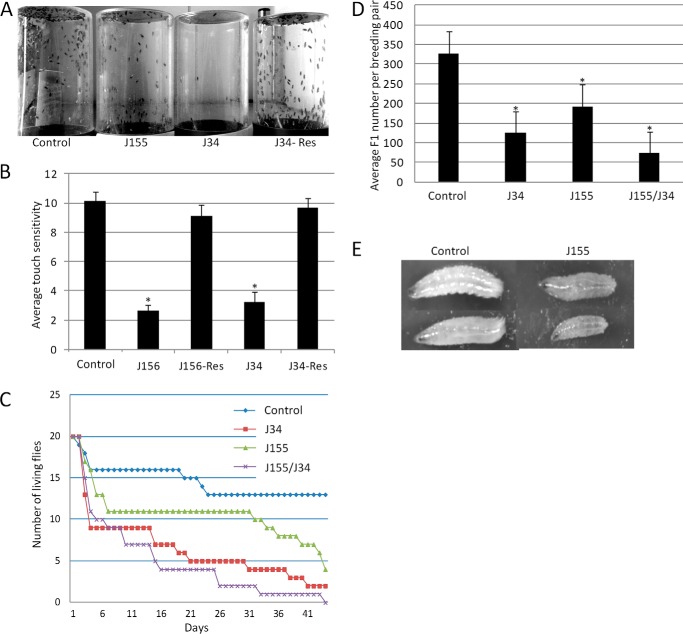FIGURE 3.
A, images of glass jars showing upward migration of flies 30 min after flies were shaken to the bottom of the jar. Note the decrease in the migration of dSCCRO mutants (J34) but not dSCCRO3 mutants (J155). The migration defect in dSCCRO mutants could be rescued by re-expression of dSCCRO (j34-Res). B, graph showing results form touch sensitivity test (means ± S.E.). A significant decrease (asterisks indicate p < 0.01) in touch sensitivity was seen in two different dSCCRO mutants (J156 and J34) compared with control wild-type flies; this was rescued by re-expression of dSCCRO (J156-Res and J34-Res). C, graph showing actuarial survival in wild-type (Control) and mutant female flies (n = 20 for each). Survival was decreased in dSCCRO (J34) and dSCCRO3 (J155) mutant flies. Survival was further reduced in dSCCRO and SCCRO3 double mutants (J155/J34). D, graph showing results from breeding female mutants with wild-type males. A significant decrease (the asterisks indicates p < 0.05) in the number of F1 offspring was seen in both dSCCRO (J34) and dSCCRO3 (J155); double mutants (J155/J34) were increased. E, images showing representative same-age third instar larvae from control (wild-type) and dSCCRO3 mutant (J155) flies. Note the smaller size of the dSCCRO3 mutants.

